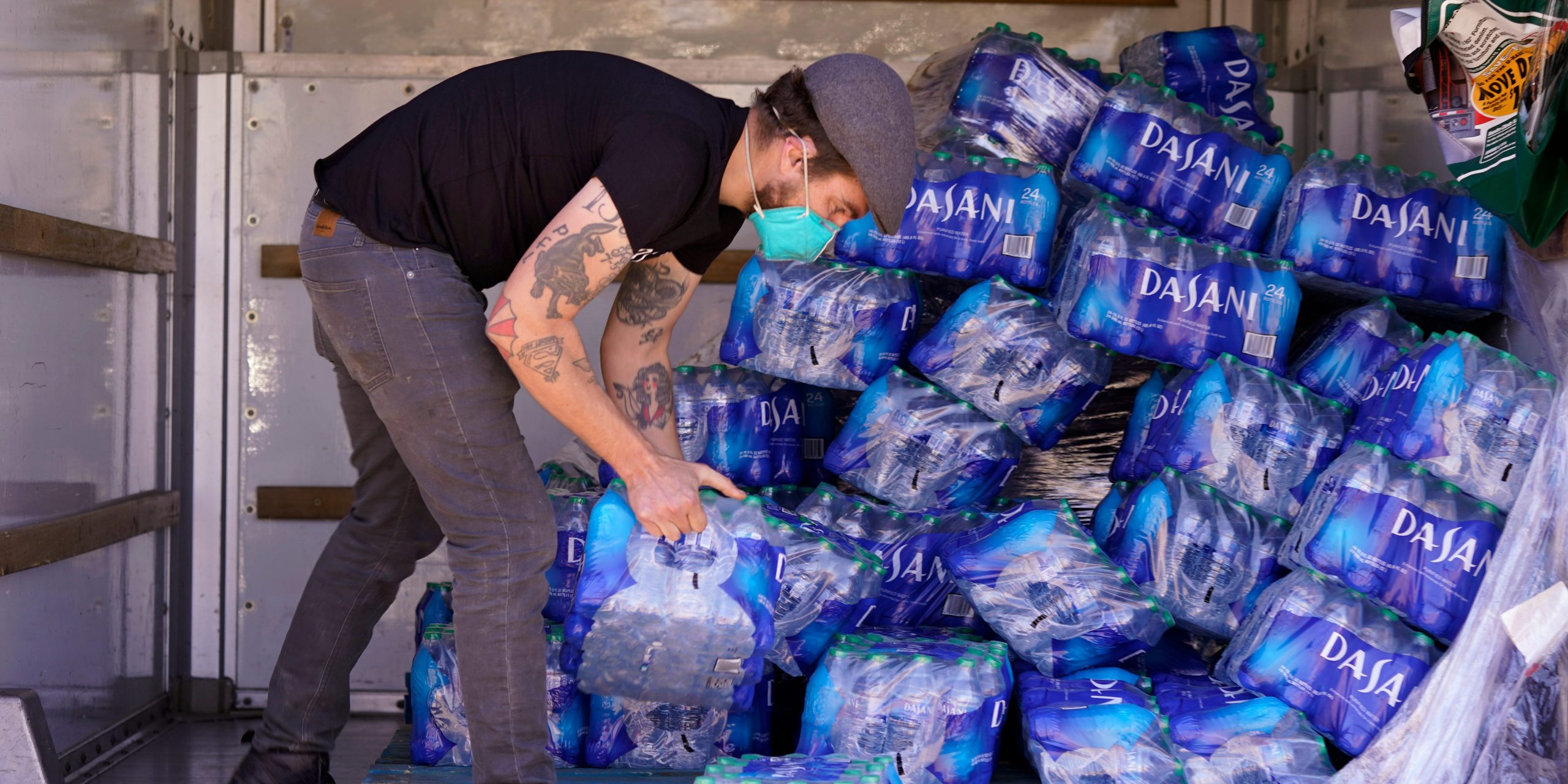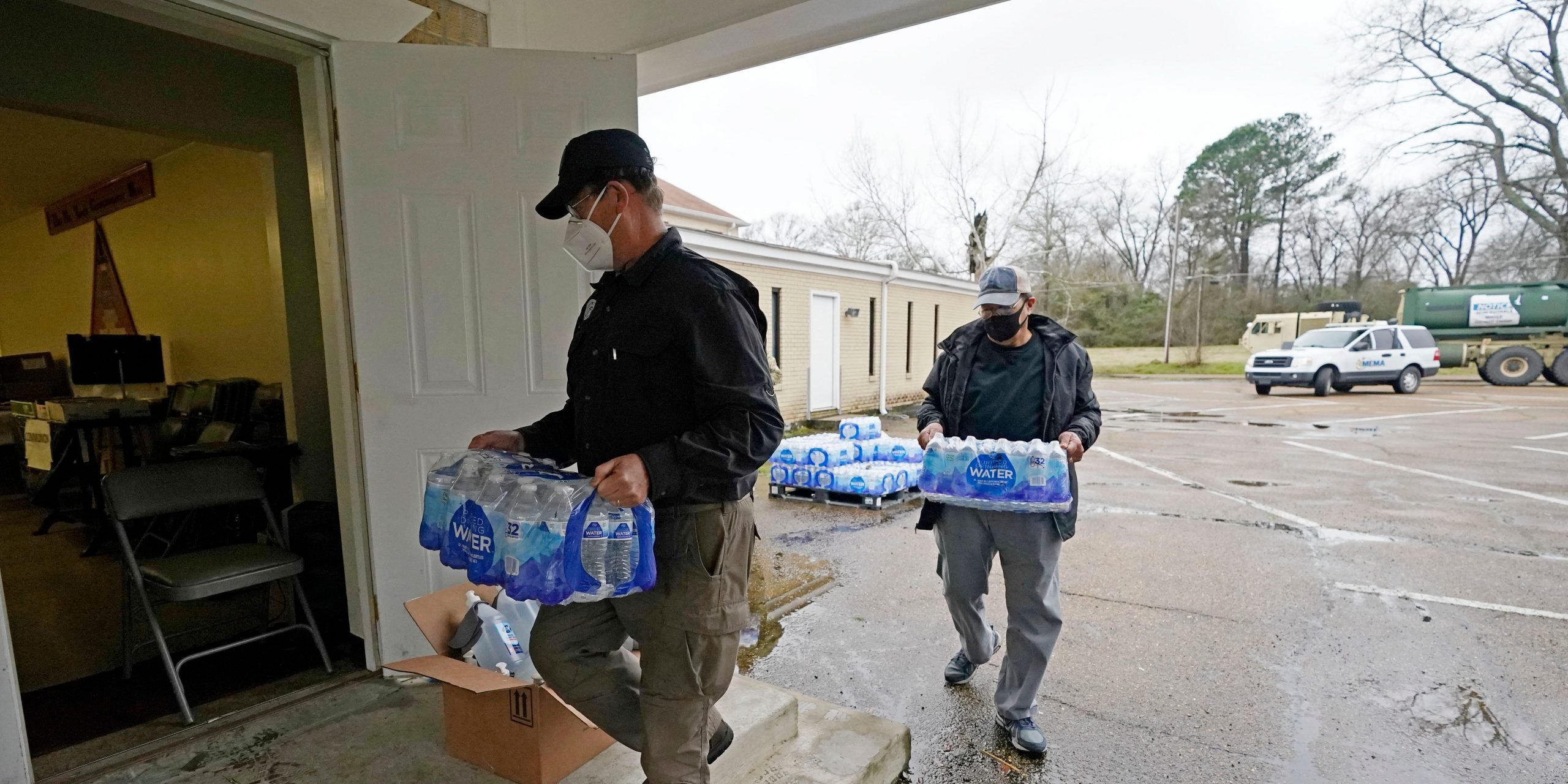
AP Photo/LM Otero, File
- A rare winter storm battered the South in mid-February, leaving millions without power and water.
- Two weeks later, hundreds of thousands of people still don’t have clean drinking water.
- City and state officials are asking for more federal assistance as they work to recover.
- Visit Insider’s homepage for more stories.
Thousands of people living in the South haven’t been able to properly flush their toilets in at least a week.
Nearly two weeks after a rare winter storm battered the region, leaving millions without power and dozens dead, hundreds of thousands of Southerners remain under boil water advisories as they deal with an ongoing water crisis.
As of Monday, more than half a million people in Texas were still under boil water advisories, according to the Texas Commission on Environmental Quality. That figure is significantly improved from the millions who were without clean drinking water in late February.
But that number doesn’t account for the burst pipes and valves that have left even more people without any running water at all. For days, residents across Texas have traveled to communal spigots to acquire clean water or have relied on relief efforts delivering bottled water they can use for drinking and hygiene purposes.
—Erica Simon (@EricaOnABC13) February 18, 2021
One Wharton, Texas, resident told Vox News that she's been searching for two weeks to find the pipe and motor parts needed to fix her burst pipes and broken well. In order to flush the toilet, 73-year-old Helen McCanick uses either donated water or buckets of water she's collected from a local church, according to the outlet.
"You went through the storm, and now it's after the storm that's the hardest part," she told Vox.
In Houston, the boil water advisory was lifted on February 21, but thousands of homes still don't have water due to burst pipes, according to a statement from Mayor Sylvester Turner.
Residents were hit with a compounding crisis in mid-February as extensive blackouts forced water treatment plants offline at the exact same time that people turned their faucets on to avoid broken pipes from the frigid temperatures, according to Vox.
The increase in demand combined with the drop in treatment plans resulted in a significant loss of water pressure across the region, which can cause dangerous bacteria levels in the water, resulting in boil water advisories. But for the millions who simultaneously lost power, boiling water on an electric stove was no longer an option.
The water outages haven't just impacted Texans - tens of thousands of residents in Jackson, Mississippi, also remain under boil water advisories, with no clear end in sight, according to The Washington Post.
Officials are unsure how many homes in the city are completely without water, but Jackson Public Works Director Charles Williams told the newspaper that water pressure Monday morning was at 37 pounds per square inch, nearly 50 points below its normal reading between 85 and 90.

AP Photo/Rogelio V. Solis
One resident told the outlet she's been using bottled water to bathe herself in the sink since the storm.
Another told The Post that her young child has regressed in their potty training, and without water to do laundry, she's had to throw away the child's soiled clothes.
President Joe Biden declared a state of emergency in Texas on February 20, which made federal funding available for residents in the state, but city and state officials are urging the federal government to provide more assistance as the region works to recover from the storm's lasting damage.
Jackson officials told The Post that the city's main water plant is nearly inoperable after the storm, and without federal help, another water crisis is almost certain.
Houston's Mayor Turner is also requesting additional help from the federal government. According to ABC News, the leader has requested more supplies from FEMA so licensed plumbers can keep repairing thousands of bust pipes throughout the city.
Have a news tip? Email this reporter: [email protected]